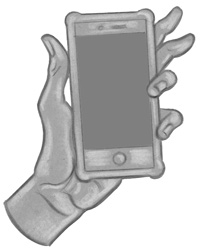 News
News24 November, 2023

The design vocabulary for AOPA’s Retrospective platform takes the last 50+ years of print publications in the art world as a primary reference: specifically the rich design conventions of contemporary art catalogs and artist monographs.
With the recent and most happy addition of the accomplished freelance designer Alex Tench to the AOPA team, the visual design process has begun. Our objective is to create a basic classic graphic theme for Retrospective that will be available to all our clients. The point of departure for this work was a concentrated round of research.
Last week, Alex went on a field trip to the Emily Carr University of Art + Design library and Don did the same at Artext and the Université du Québec à Montréal’s Bibliothèque des arts. We perused many dozens of contemporary art catalogs, from the 1970s to the present, with the intent of distilling out recurring design choices.
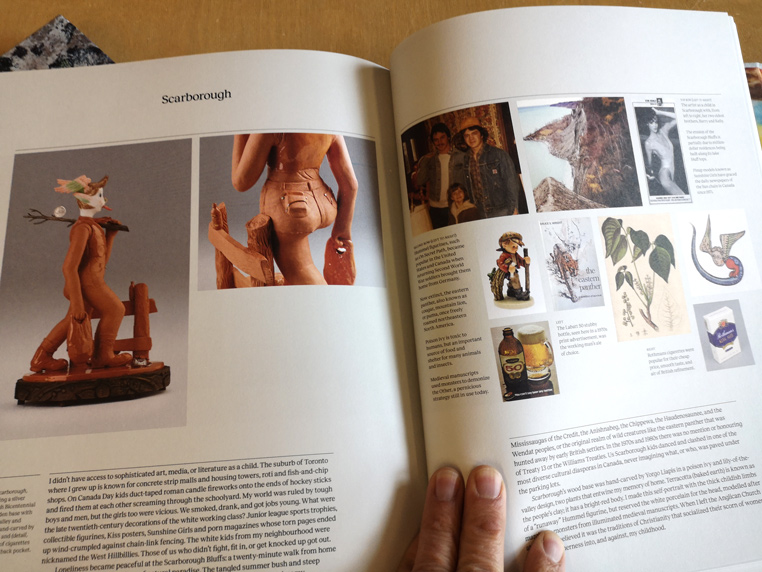
We quickly found that there were many best practices for presenting information and images that the unsung army of talented and committed art-publication designers have returned to over the years. We identified the visual treatments that made the content easy to understand and read, and that struck the eye as looking fabulous and beautiful. Then we gave consideration to which of these design conventions showed promise in making the transition from paper to screen. What’s relevant on the physical page does not necessarily translate to monitors or mobile devices.
Before getting into the research findings, this is a good place to reiterate a fundamental principle that is applied to all AOPA’s design work, whether it is visual or in terms of usability. We take as a given that our design decisions must not only put the artwork first, but also must enhance, where possible, users’ understanding of the artist’s creative project. We want people to leave feeling they are closer to the artwork.
For graphic design this means it must, in most cases, be quiet, sit back. It should only come forward if a bolder graphic treatment makes sense for the artist’s work. The design is in the service of the art, not vice versa.
Here are some of the findings that Alex put together, which will guide his design work on the classic Retrospective theme…
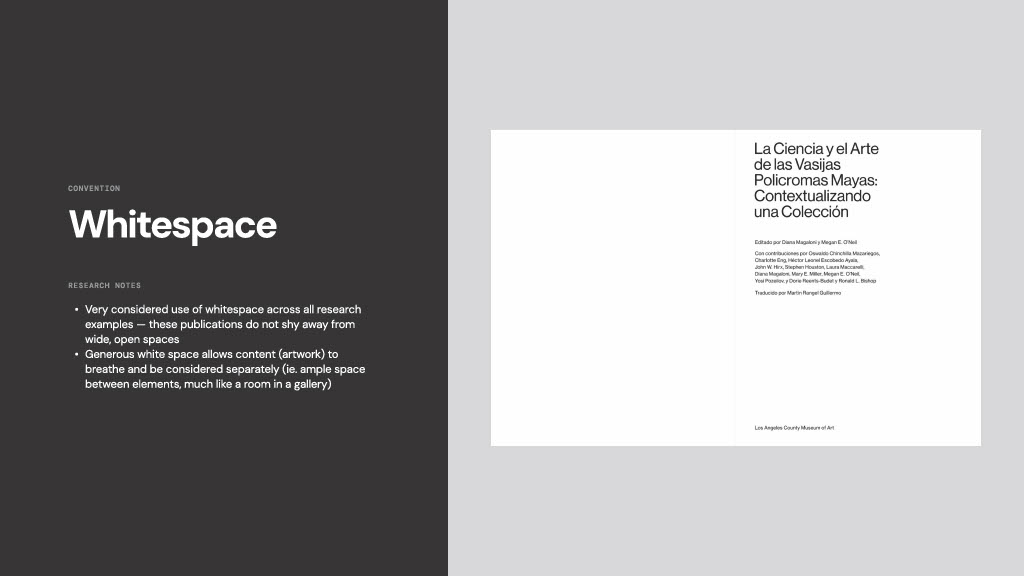
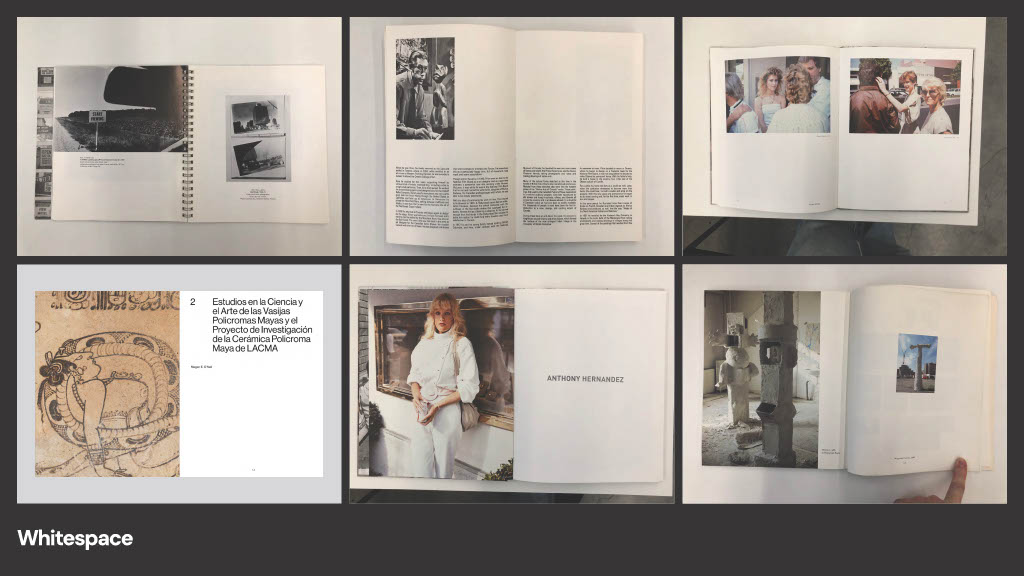
Convention: White Space (examples)



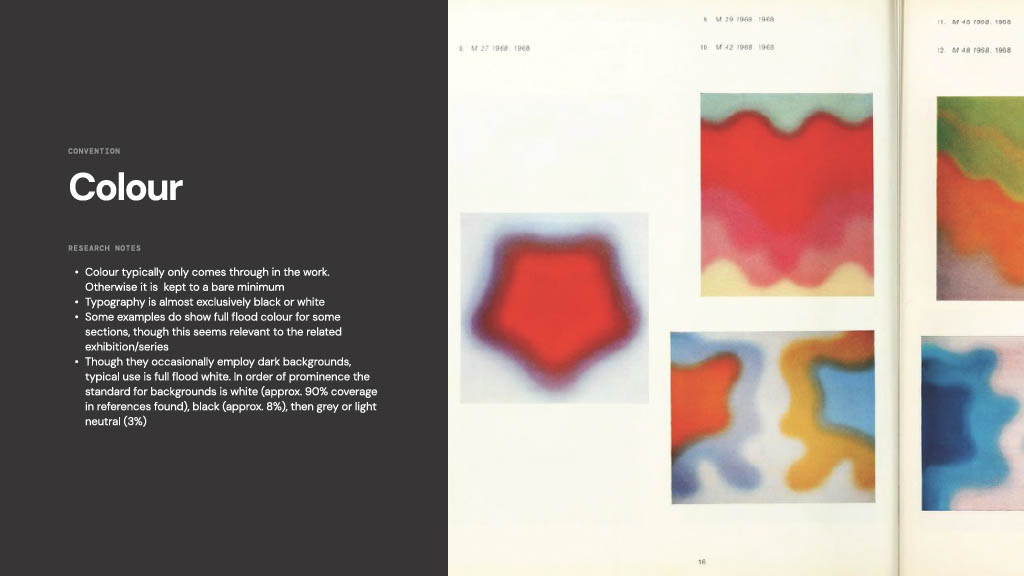

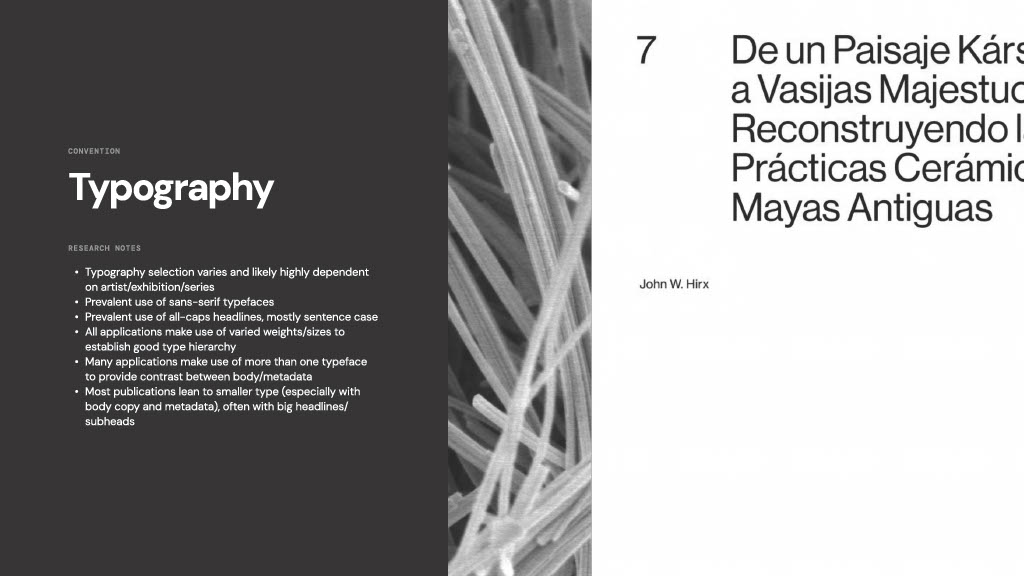
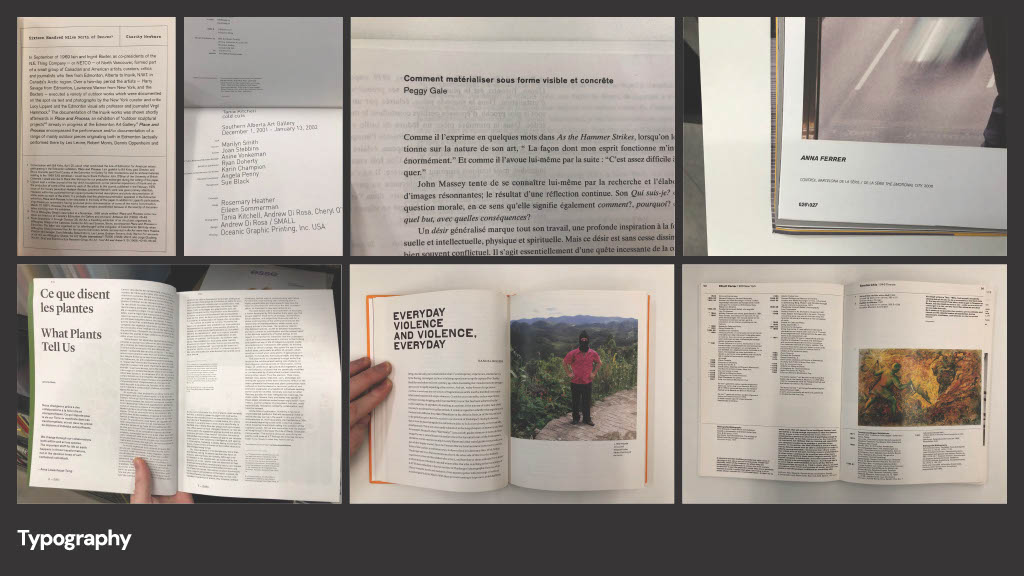
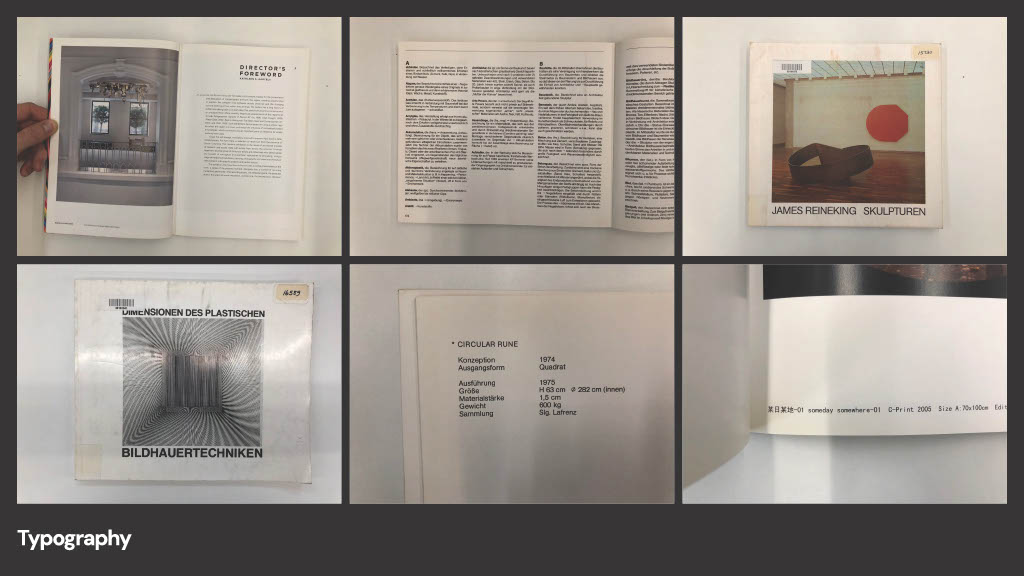
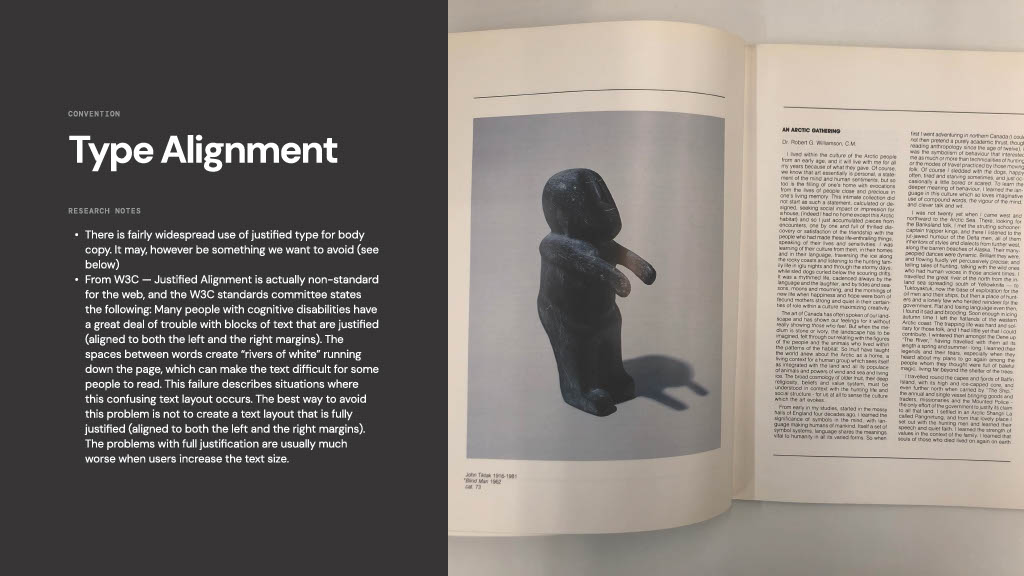
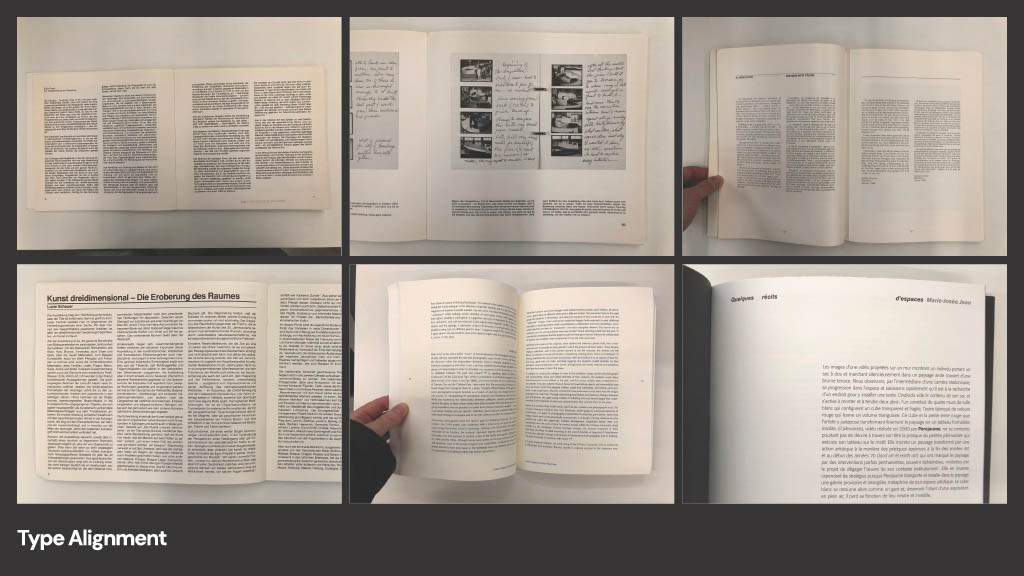
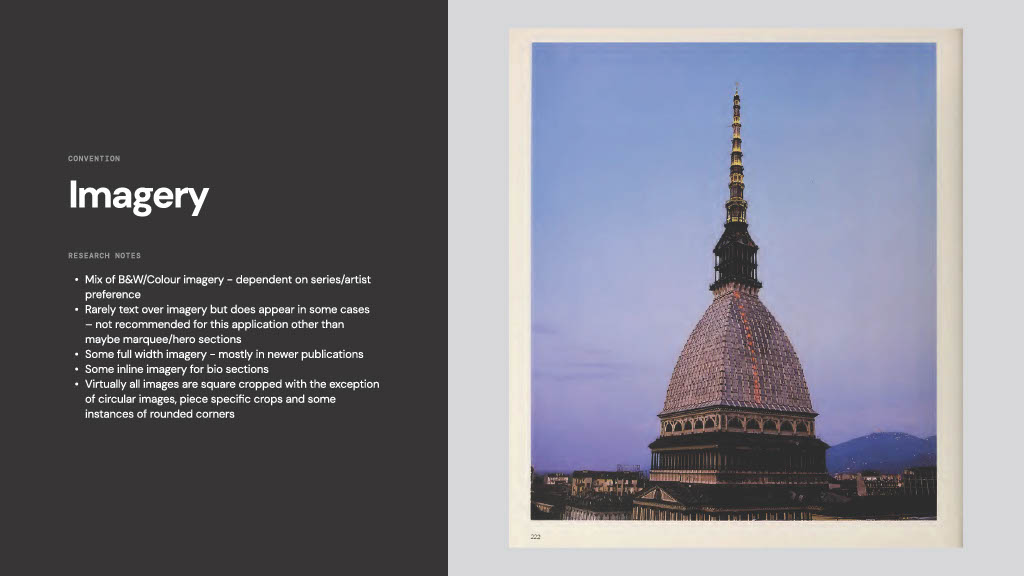
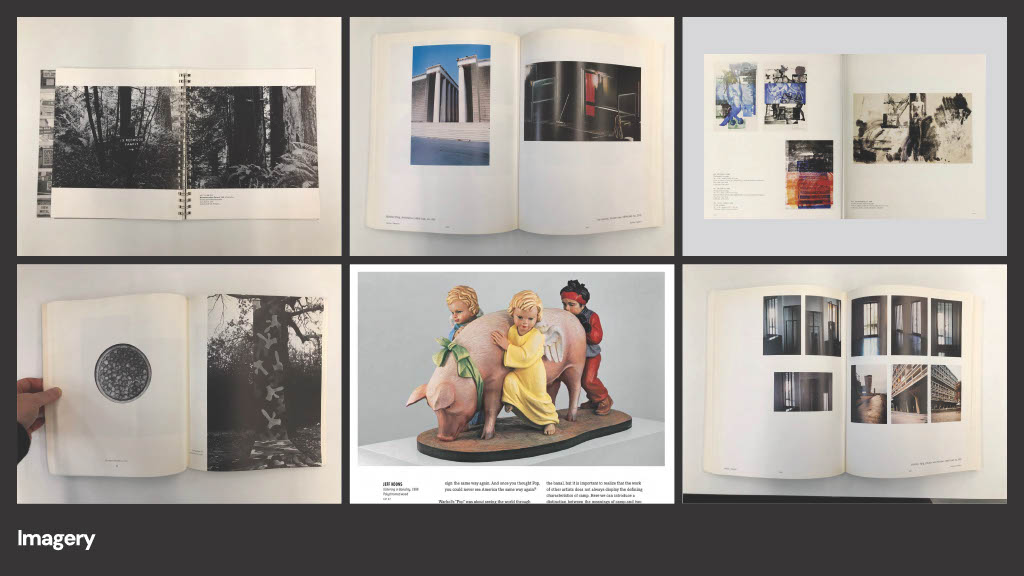
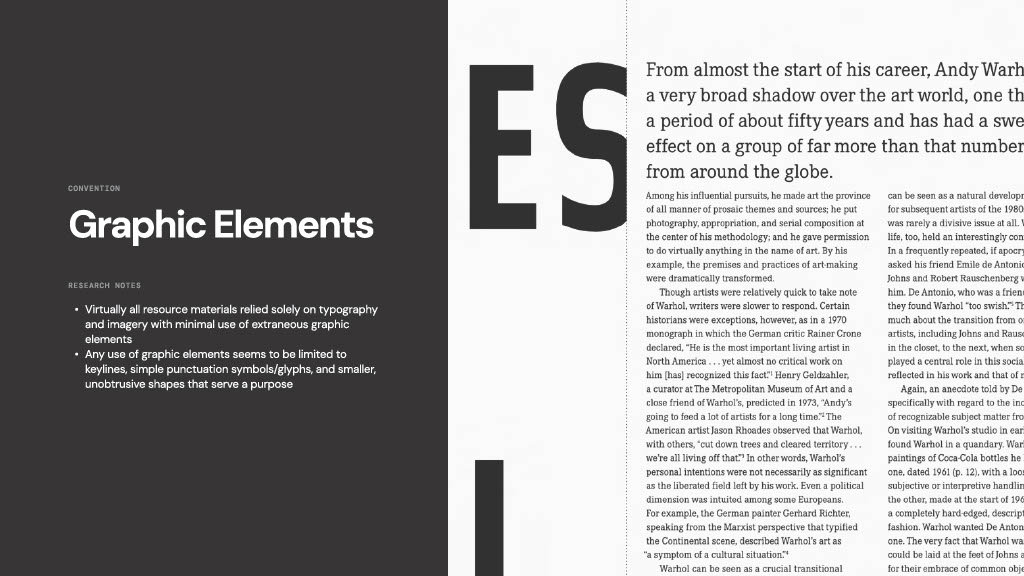
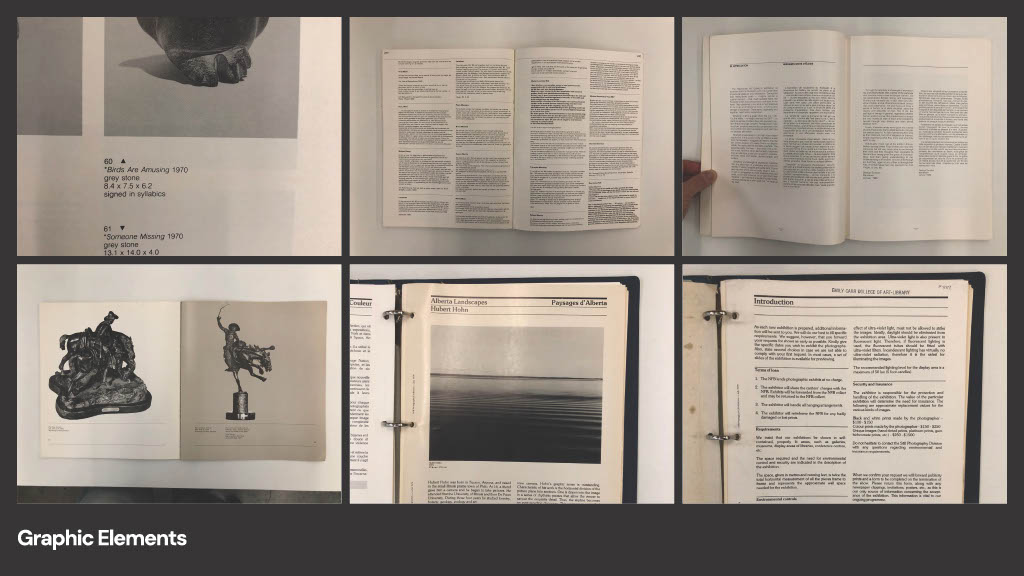
choose your preferred method of communication